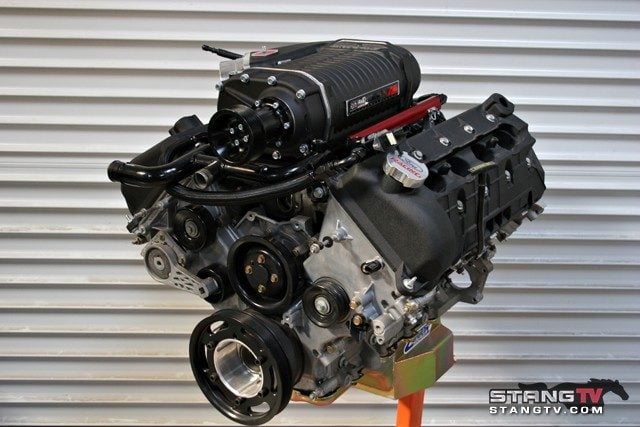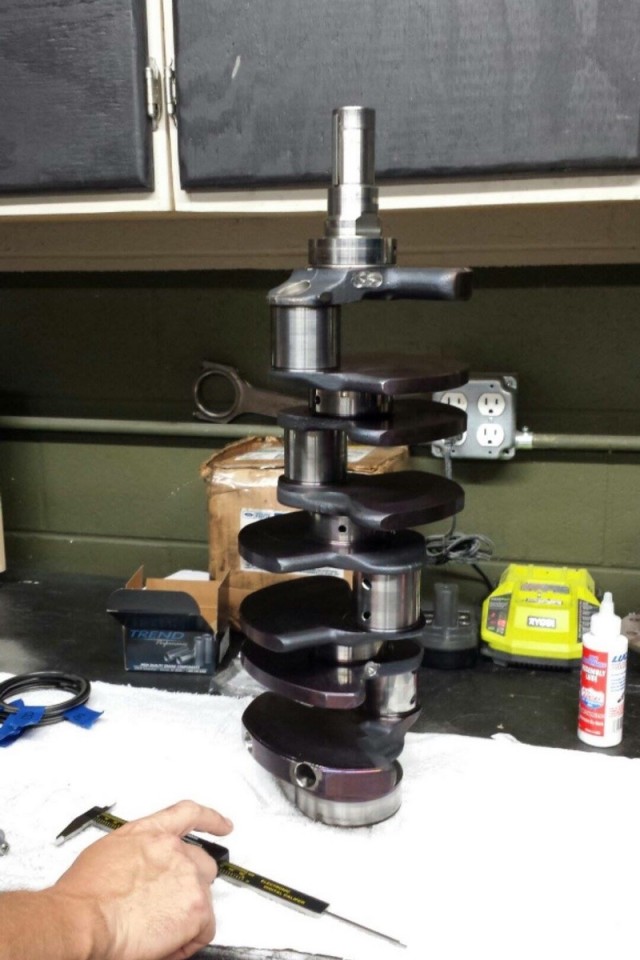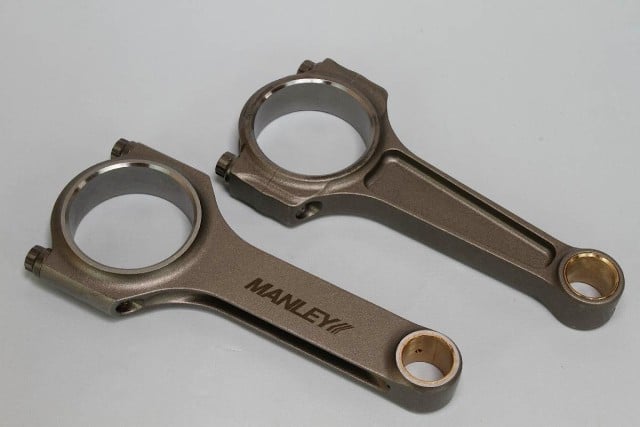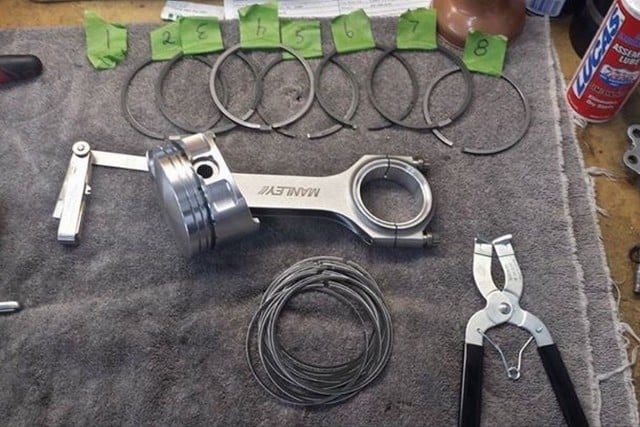2002 Mustang Terminator

Fredrick Kyle's twin-turbo '03 Terminator Cobra serves as a perfect example of a modified Cobras capabilities.
The '03-'04 SVT Cobra (often referred to by many as the Terminator, and dubbed by Ford's SVT division during the early stages of development) is one of the most iconic cars the blue oval has produced, and for good reason.
More than a decade later, this factory supercharged Mustang still commands a certain respect. A force to be reckoned with both then and now, these Cobras are considered the pinnacle of SVT and its capabilities during the SN-95 era.
With so many unique aspects to the '03-'04 Cobra which brought with it both modern technology and performance at the time of its arrival, we wanted to share a particular aspect that makes the Terminator so highly desirable even by today's standards.
In the scope of this article, we'll be diving into a breakdown of the '03-'04 supercharged Cobra engines internals. We'll discuss their construction as well as the capabilities of the components which were chosen for this legendary powerplant.
Why Is The Terminator Engine So Desirable?

Did you catch our 850 HP Whipple supercharged Terminator Cobra build? Check it out here.
This is a question we often see from many Mustang enthusiasts. What makes this engine so great? How is it different from any other Mustang engine?
While the supercharged 4.6-liter 4-valve V8 found in the Terminator Cobra might share its displacement with other modular engine powered Mustangs of the past, the similarities between them end there. The factory Terminator engine consists of several Cobra specific components which are not found on any other modular engine, including the older '96-'98 and '99 and '01 SVT Cobra Mustangs. So anyone telling you that a '03-'04 Terminator engine is nothing more than a modular 4.6-liter 4-valve V8 with a supercharger strapped on top of it, you can happily forward this article to them.
One of many reasons why these engines are regarded as the pinnacle of Ford and its SVT division's potential (at the time) is its ability to withstand extreme abuse, both in factory-form and post modification. Countless engine builders across the nation have demonstrated that the factory internals can easily withstand more than 700 rear-wheel horsepower, while engineers from the company's SVT division have attested in the past that these engines are engineered to easily reach 100,000 miles or more before requiring any kind of rebuild.
The Crankshaft
 Armed with this knowledge, let's dive into the internal components that make up this amazing supercharged DOHC 281 cubic-inch V8.
Armed with this knowledge, let's dive into the internal components that make up this amazing supercharged DOHC 281 cubic-inch V8.
During the development of the Terminator engine, SVT engineers knew that hot rodders would inevitably modify these potent engines, which is why the team decided to forgo using a cast iron crankshaft.
Utilizing a forged steel, fully counterweighted crankshaft with an 8-bolt hub from a company called Kellogg Crankshaft Company was the answer. This type of crankshaft created a solid foundation for the engine's rotating assembly. This standard journal diameter forged steel crankshaft has a stroke of 90mm and has a weight of just under 50 pounds.
The '03-'04 Terminator Cobra crankshaft is well known amongst enthusiasts for its strength and durability, which is why they are used as a cost effective upgrade in many high-horsepower 4.6-liter modular-variant engine builds. Though be aware, using this crankshaft may require some modification to your existing block and balancing if used in non-SVT applications.
Pistons And Connecting Rods
Apart from the '03-'04 SVT Cobra engine, all other variants of the 4.6-liter modular V8 engine (both SOHC and DOHC) make use of a powdered metal connecting rod. These rods were suitable for reducing costs during development, but not so much for both pre and post-factory performance applications.
 This is why the factory Terminator short-block employs forged-steel H-beam connecting rods from Manley Performance. Matching forged steel caps which are forged separately are also used. This process creates a stronger and lighter connecting rod that will withstand extreme boost pressure without shattering like a powdered metal rod would. The rods are finished off using ARP connecting rod bolts.
This is why the factory Terminator short-block employs forged-steel H-beam connecting rods from Manley Performance. Matching forged steel caps which are forged separately are also used. This process creates a stronger and lighter connecting rod that will withstand extreme boost pressure without shattering like a powdered metal rod would. The rods are finished off using ARP connecting rod bolts.
Like the aforementioned connecting rods, Manley also supplied the forged aluminum 8.5:1 pistons used by the factory in the '03-'04 Cobra short-block.
 Many 4.6-liter modular V8 engine variants used cast aluminum pistons, more specifically hypereutectic pistons to be exact. Because the Terminator engine employs a supercharger (I.E. forced induction), using a hypereutectic piston wasn't really the best option from a durability standpoint. These types of pistons, while sufficient enough for medium-duty, wouldn't be able to withstand the intense cylinder pressure of an engine with forced induction.
Many 4.6-liter modular V8 engine variants used cast aluminum pistons, more specifically hypereutectic pistons to be exact. Because the Terminator engine employs a supercharger (I.E. forced induction), using a hypereutectic piston wasn't really the best option from a durability standpoint. These types of pistons, while sufficient enough for medium-duty, wouldn't be able to withstand the intense cylinder pressure of an engine with forced induction.
On the other hand, the forged aluminum pistons used in the Terminator short-block can endure considerably higher cylinder pressures and heat. One drawback of a forged-piston application is some additional noise (I.E. 'piston slap') during a cold start, due to a need for more static clearance than their cast counterparts. But the tradeoff to this is a tighter fitting seal in the combustion chamber once at operating temperature, when the noise is no longer heard.
Concluding Part One
It's evident that we haven't even come close to scratching the surface of what makes the Terminator engine so legendary and sought-after during part one of our series, but we've covered a good amount of ground thus far.
During part two, we'll discuss the additional construction of the engine as a whole; such as the cylinder heads, engine block, camshafts, and factory exhaust manifolds. It is also important to note that the Terminator engine does not use the same accessories as many of the alternative 4.6-liter modular V8 engine variants, a discussion which could possibly generate a third portion of this series.
Keep an eye out for part two in the next coming weeks, and feel free to ask any questions in-between now and then if you'd like to read any additional information we haven't covered yet.
Source: https://www.fordmuscle.com/news/what-makes-the-terminator-cobra-engine-so-good-part-one/
